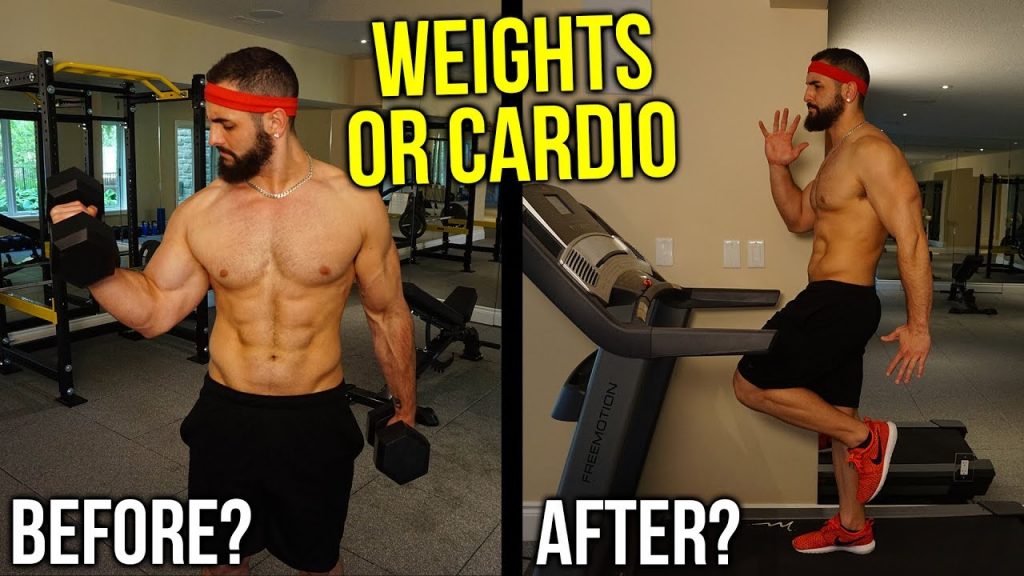Cardiovascular exercise is an integral part of shedding body fat so that your muscles will show to their fullest extent. However, the devil is in the details when it comes to making cardio as effective as possible. Very often, a trainer will fail on his goals of getting ripped – but not because of lack of effort. Rather, it will be a result of efforts being misguided and energy being misrouted. Let’s look at a few of the essentials of cardiovascular exercise in relation to weight training.
We lift weights to grow bigger and stronger muscles. This is a fact. We increase our protein, fat and carbohydrate macronutrient intake so that we are able to fuel our muscle fibers in recovery from workouts. Then, we sleep, and we grow. There comes a point where we decide it is time to shed some body fat, and display our muscle groups to the best of their abilities. When this happens, one of three possible outcomes will occur. We will fail to burn fat, we will burn fat while burning muscle, or we will burn only fat and preserve muscle. The third option is obviously the most desired outcome!
Getting down to the business of training… Let’s decide the best time to complete cardiovascular training. Very often, this will depend upon your schedule. If you’re a student or you work from home, there’s a good chance that the world is your oyster when it comes to training schedule. You can put down your keyboard and hit the gym at 11 am every day if you’d like! However, if you work a full-time job or have other obligations, you may not enjoy such flexibility when it comes to arranging cardio sessions.
Planning your cardio after weight training is a good idea for several reasons. First, you will not skip many days. Let’s face it, driving 12 minutes to the gym for a 28 minute elliptical training session isn’t always that appetizing of a prospect. However, if you are already at the gym, having completed your brutal chest and triceps workout, slumping over a treadmill at the gym for 20 minutes might not be too tough of a prospect. You can use that time to dictate in your training journal just how successful the workout was. Or use the time to check your email on your smart phone. You’ve been focused on the weights – now it’s time to just relax and focus on burning fat.
The second reason cardio after weight training is a good idea involves fuel. That’s right – your body will use whatever fuel is available for its energy needs during the training session. Your system will select sugars in your gut and bloodstream (from calories found in your earlier meals of the day) before it attempts to use stored body fat. For this reason, many trainers who sip juice during their workout never seem to get lean. By drinking water or Crystal Lite during your workout (when the sugars are being burned up), you ensure your body will consume stored body fat for fuel during the cardio section of your training day.
Finally, your central nervous system (CNS) will be least impacted by placing your cardio after weight training. Instead of experiencing two brutal training sessions each day (if you had places cardio in the morning and training in the afternoon), your system will only be forced to endure one period of extreme stress and impact. Make it 90 minutes of hell, instead of two mini-sessions of hell, and your body will love you for it!
If you can train with your cardio in the morning, you’ll serve your fat loss goals in an even greater capacity! Your body will have consumed any available sugars in the 7 to 8 hours of sleep, leaving only stored body fat available to be used as fuel in the morning training session. Consume nothing except possibly water and a sugar-free drunk to ensure no carbs are in your system to be used for energy. Burn up that fat instead!
The intensity of cardio after weight training should be low. You don’t want to be a sprinting fool with a heart rate at 150 beats per minute, unless you plan on burning up your muscle. Look at the training DVD’s of today’s top bodybuilders. Their cardio is low, slow, and monotonous. They’ll get on the treadmill and walk slowly for an hour, instead of killing themselves at an insane incline and speed for 20 minutes. The proof is in the pudding! They maintain their muscle. Follow their lead by keeping your cardio (whatever time of the day you choose to do it) at a slow pace, and your heart rate in the 120 to 130 BPM range.
Diet is always an integral par of making sure you are able to burn fat without destroying your hard-earned muscle. Stick with high portions of protein, moderate fats, and low carbohydrates to ensure the right energy sources are available for muscle maintenance, as well as fat burning processes. Keep your mental energies sharp and focused, and don’t allow yourself to become too stressed. Monitor your blood pressure, particularly when using fat-burners. Above all, have patience and be consistent – the fat burning will display your muscle like never before, you jut have to give it time!

